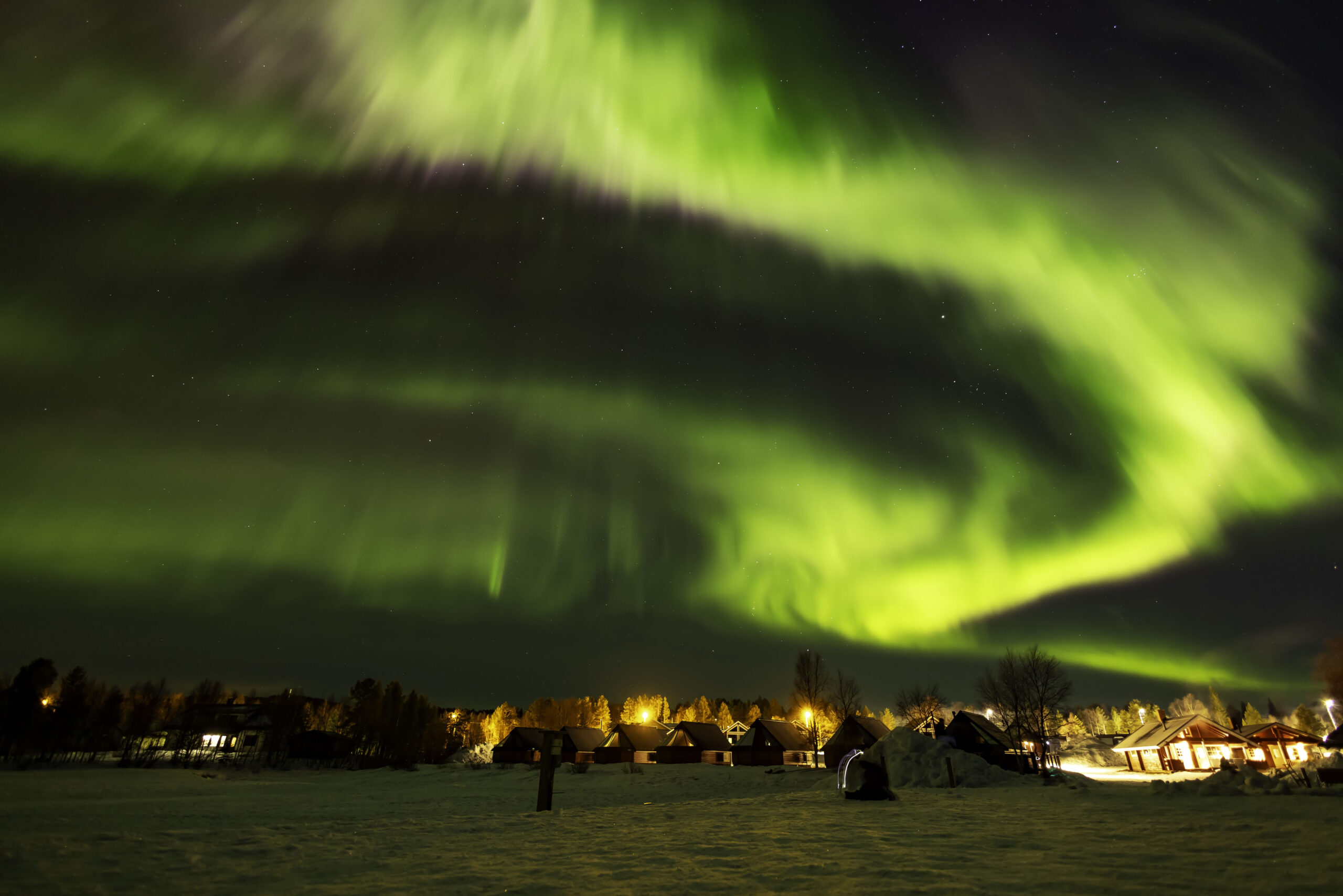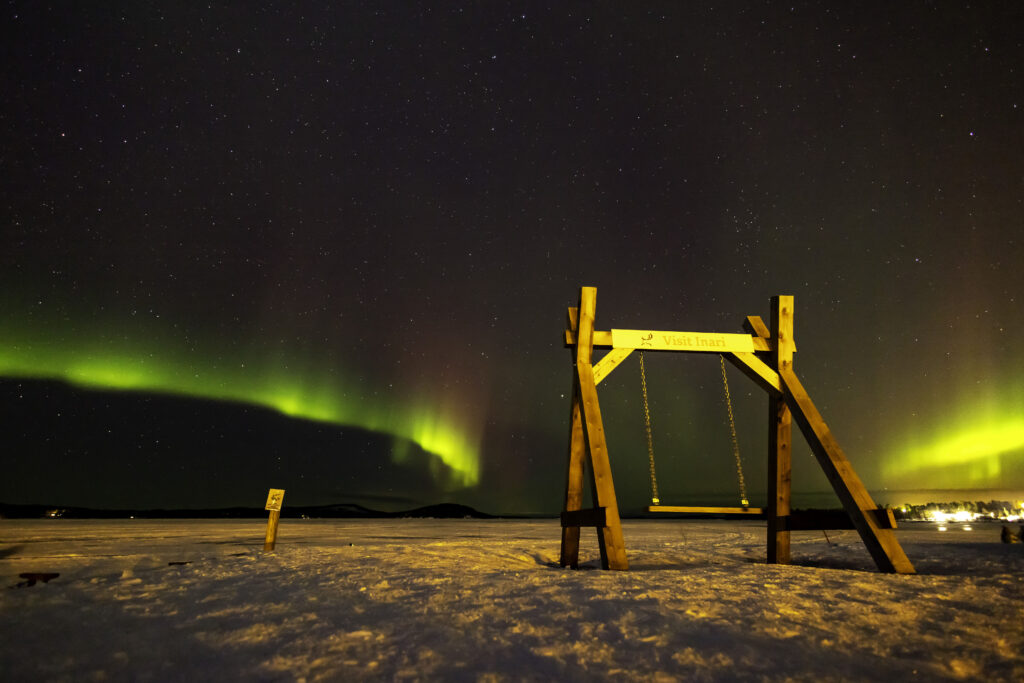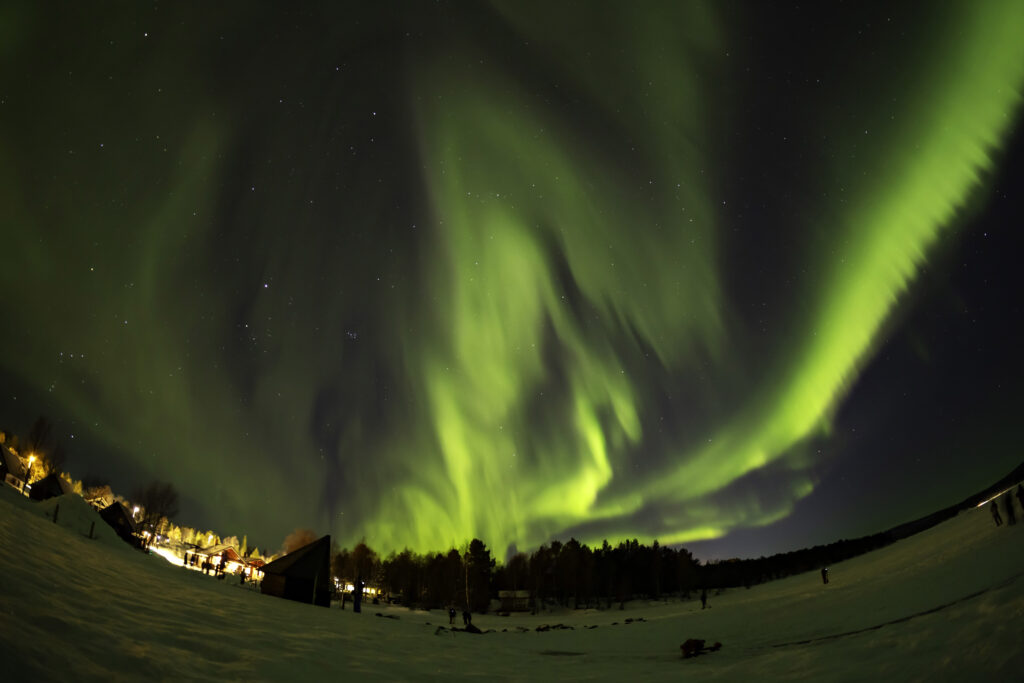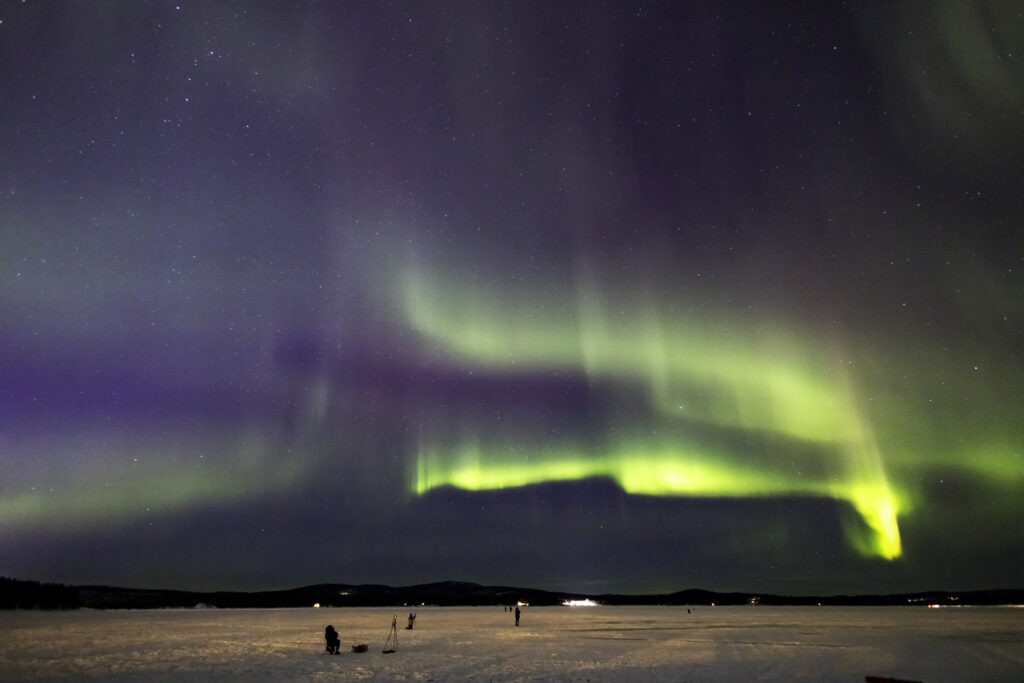
- Aerospace
Categories:
You may have come across a photograph of the Northern Lights before, or perhaps you’ve been fortunate enough to witness this spectacular atmospheric light phenomenon first-hand. Have you ever wondered how it occurs?
Auroras originate when electrically charged particles from the solar wind (mainly protons and electrons) interact with the Earth’s atmosphere. These particles are deflected by the Earth’s magnetic field towards the polar regions, where the interaction takes place.
The phenomenon intensifies during magnetic reconnection events, which occur when the interplanetary magnetic field, carried by the solar wind, is oriented in the opposite direction to the Earth’s magnetic field.
The highly energetic charged particles—especially electrons—follow helical paths along the magnetic field lines resulting from the interaction between the interplanetary and terrestrial magnetic fields. Along their path, they collide with atmospheric gas molecules and atoms, mainly nitrogen and oxygen, transferring energy and exciting them.

Light emission and colour spectrum
When the excited atoms or molecules spontaneously relax to lower energy levels, they emit the excess energy in the form of photons. The wavelengths of these photons vary depending on the initial (excited) and final (relaxed) energy levels, and some fall within the visible spectrum, producing the characteristic colours of aurorae.
Atomic oxygen is responsible for green (557.7 nm) and red (630.0 nm) emissions, while molecular nitrogen produces violet and blue hues. It is worth noting that molecular oxygen and atomic nitrogen mainly emit outside the visible spectrum.
Vertical distribution of emissions
The vertical distribution of auroral emissions is determined by several factors:
- Green light (557.7 nm) from atomic oxygen—the most common—originates at altitudes between 100 and 150 km. This emission results from a transition from a metastable excited state (1S) to a lower one (1D).
- Red light (630.0 nm) from atomic oxygen occurs between 200 and 300 km altitude, resulting from a transition from a metastable excited state (1D) to the ground state.
- Blue and violet emissions from molecular nitrogen occur between 90 and 120 km in altitude.

Their effect on satellite communication and navigation systems
When solar activity is intense, such as during a geomagnetic storm or following a coronal mass ejection (CME), a large number of charged particles can penetrate deeply into the Earth’s magnetosphere. This can disrupt satellite communication and navigation systems, as high-energy electrons may damage electronic components and affect the accuracy of navigation signals (GPS, Galileo, etc.). Moreover, the increase in particle density in the upper layers of the atmosphere can cause the ionosphere and exosphere to expand, generating greater drag on low-Earth-orbit satellites, potentially altering their trajectories and increasing the risk of loss of control or re-entry.
On the ground, geomagnetic storms can induce electric currents in power transmission networks, affecting transformers and electrical infrastructure, particularly at high latitudes. In extreme cases, such as the 1859 solar storm (Carrington Event), these currents can be intense enough to cause widespread blackouts. Shortwave radio transmissions may also experience irregularities, and systems relying on the ionosphere for navigation can be impacted. For this reason, solar activity is constantly monitored to help prevent damage to critical infrastructure.
In summary, aurorae occur at altitudes ranging from 90 to 300 km. Above this range, particle density is insufficient to produce significant interactions. Below it, the atmospheric density is so high that excited atoms or molecules lose their energy through collisions before they can emit light—a process known as collisional quenching. It is truly a natural light show, caused by the “dance” between solar particles and the gases in our atmosphere.

Photos taken by the author at Lake Inari (Finland), using a Canon R5 camera on a mini-tripod; Canon RF 16mm f/2.8 STM and TTArtisan 11mm Fisheye f/2.8 lenses. Exposures: 2–4 seconds at ISO 1600–6400.
Ferran Costas
Ferran Costas is a telecommunications engineer with a master's degree in business administration. Among other companies, he has worked at RYMSA for nine years, Mier Comunicaciones for 13 years, and TRYO Aerospace for five years. These companies are currently part of Sener, where he has been Director of Innovation and Technology since 2019. He is also passionate about astrophysics, cosmology, and astrophotography.









